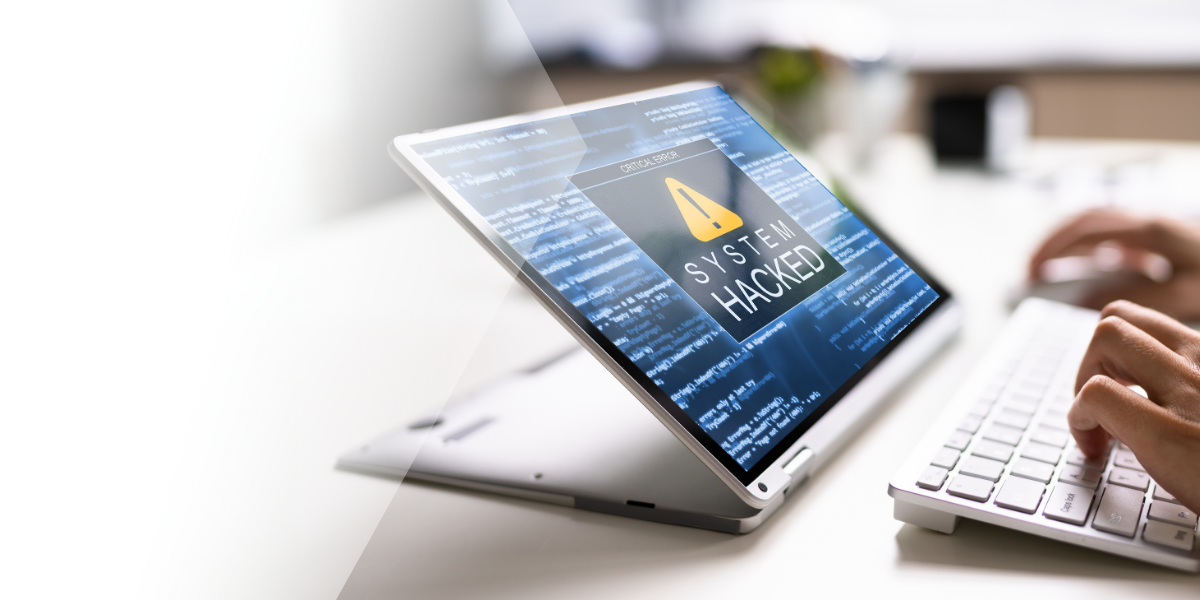
Understanding and Preventing Ransomware Attacks
Ransomware is a major threat to every business. In a nutshell, ransomware attacks are cyber extortion, where malicious software penetrates your computer systems and then encrypts your data, holding it ransom until you agree to pay up.
Like many other forms of malware, ransomware is often introduced as the “payload” of a phishing campaign, where the attacker tries to entice you to download a file, generally in the form of an email attachment or on a malicious website. Ransomware is particularly malicious because encrypted files typically can’t be decrypted without the attacker’s private encryption key. In other words, even if you remove the malware from your device, you still won’t be able to access your files without the attacker decrypting them.
In addition to the cost of the ransom amount itself, ransomware disrupts your business, which causes revenue losses and extra operational expenses. In fact, it’s estimated that it costs on average more than £2.73 million for organisations to recover from a single ransomware attack.
It’s crucial to protect your business from falling victim to a ransomware attack, which means you should have a plan in place to do so.
To develop a plan, it’s important to understand the various stages of an attack.
4 Stages of a Ransomware Attack
- Targeting: Potential victims are sent a malicious file, often through phishing emails or malicious links. Attackers use social engineering tactics to make these emails appear legitimate.
- Execution and Encryption: Once the ransomware is executed, it encrypts files using strong encryption algorithms, and the attacker’s remote private encryption key is used to lock the files.
- Demands: The victim receives a ransom note with instructions on how to pay the ransom, usually in cryptocurrency, to decrypt their files. Payment details, such as a cryptocurrency address, are provided.
- User response: The victim must decide whether to pay the ransom. If payment is not made, the files remain encrypted. While antivirus software can remove the malware, it cannot decrypt the files. Even if the ransom is paid, there is no guarantee that the attacker will provide the decryption key.
There are various types of ransomware attacks, including:
- Scareware: Attempts to frighten the victim into taking action.
- Crypto-ransomware: Demands payment in cryptocurrency, making transactions irreversible.
- Locker ransomware: Locks the victim out of their device entirely, preventing even antivirus software from running.
3 Steps for Preventing Ransomware
To prevent a ransomware attack, there are three key areas you need to address in your business:
- Understand and audit your vulnerabilities: Where are the weak points in your organisation? For example, given that ransomware typically comes from phishing attacks, are your employees vulnerable to email phishing campaigns? Phishing simulations can help proactively detect weaknesses and can also be used to test your defences. This can be done by implementing regular cybersecurity awareness training to educate employees on recognising and avoiding phishing attempts.
- Put defence measures in place, proactively: Businesses today need a Security Operations (SecOps) team in place that is able to quickly triage, investigate, and respond to potential phishing attacks in real-time. They should also have automated incident response systems in place to ensure that responses to threats are immediate. While many organisations do not have this capacity available internally, specialist providers have evolved specifically to meet these needs on an outsourced basis. For instance, Numata’s Managed Security Operations Centre (SOC) offers integrated threat intelligence to provide 24/7 threat monitoring, protecting all your endpoints, networks, and cloud data.
- Implement advanced protection tools: As malware and cyber threats evolve rapidly, traditional protection tools may not suffice. While firewalls, URL filters, and anti-spam software are essential, they are not enough to counter sophisticated attacks. Advanced protection mechanisms such as advanced malware and URL protection, and machine learning technologies to detect and prevent evolving threats more effectively than manual analysis.
Conclusion
Maintaining a proactive cybersecurity posture is crucial for safeguarding your business against ransomware and other sophisticated threats. Implementing best practices, such as regular data backups, effective patch management, comprehensive user education, and robust endpoint protection, forms the foundation of a strong defence strategy. However, as cyberattacks grow more advanced, your security solutions must evolve accordingly.
Numata's SOC as-a-Service offers a comprehensive solution to secure your small to medium-sized business with advanced threat intelligence and 24/7 monitoring. Don't leave your business vulnerable to attack. Contact us today to enhance your cybersecurity posture and ensure a safer future for your organisation.

